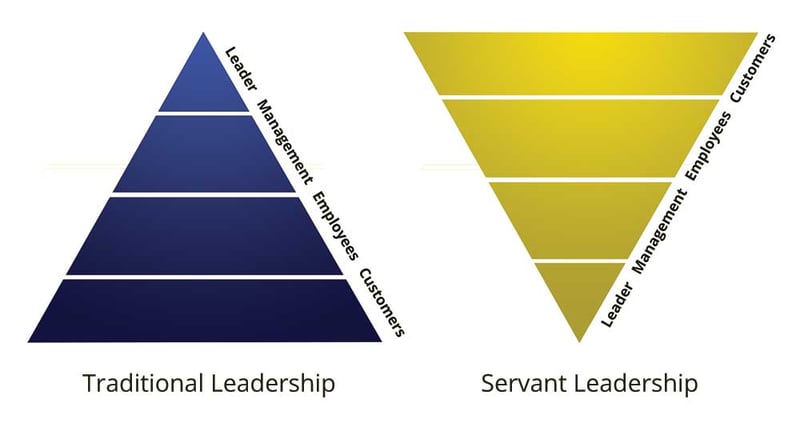Over one third of marketers are already using Agile practices to manage their tasks.
And, according to the State of Agile Marketing Report 2019, even marketers who refer to themselves as “traditional” are likely to make the move to Agile within the year.
Unfortunately, some teams that consider themselves Agile are only applying Agile practices to the way they manage tasks.
Their teams are still managed in a more traditional way, limiting the benefits they get from marketing agility.
That’s probably why, when asked about the biggest barrier preventing marketing departments from more completely implementing an Agile approach, 11% of respondents said they were lacking “support from their managers.”
Management has the potential to help an Agile team thrive, or hold them back.
So, if you’re the manager of an Agile team and want to check whether you’re being the best Agile manager you can be -- read on for some tips you can start using today.
Likewise, if you’re part of a team that you think is not being managed in an Agile way -- pass this on to those you think would need it most.
Agile Tasks vs. Agile Teams
Managing your tasks in an Agile way and managing your team in an Agile way are two complementary, yet separate, concepts. Bundling them together could result in neglecting one or the other (or giving up on Agile altogether, yikes!).
What’s Agile Task Management?
Agile task management refers to the way you apply Agile values and principles when organizing your team’s work items.
For example, if you’re already using:
- a Kanban board
- WIP limits
- user stories
- planning poker for estimation
then you’re probably applying some form of Agile practice to the management of your tasks. Of course, this is a vital step towards marketing agility.
However, it mainly concerns the team’s work. These practices don’t get to the heart of team management or group organization.
What’s Agile Team Management?
Agile team management is how managers apply Agile values and principles to organize the team itself.
If you can say with confidence that your team members:
- are self-organized
- hold each other accountable for the work they do
- have a shared understanding of the Agile mindset
- have enough feedback loops in their process and use them regularly
- practice continuous mentoring and shared skill sets
...then, you’re a master of your team’s Agile management! However, these team-level shifts are tough to achieve.
While it might take a few days to apply an Agile practice to your tasks, applying Agile practices to your team structure and mindset can be a long-term challenge.
The good news is, the change is well worth it in the end.
Used in conjunction, Agile team and task management have the potential to take your team to far greater heights than they could achieve with just one alone.
Take the survey to see how you stack up against the 32% of marketers who report using Agile principles and practices to manage their work.
Servant Leadership
Since Robert Greenleaf coined the term in the 1970s, “servant leadership” has become the go-to phrase for explaining the relationship between Agile managers and their teams.
“The servant-leader shares power, puts the needs of others first, and helps people develop and perform as highly as possible,” says Greenleaf.
In an Agile marketing department, managers, directors, and other people in leadership roles act differently than in a traditional team.
They’re focused on serving the team to help them succeed, not on hitting their organizational targets at any cost.
Image from 6Q Blog
As an Agile marketing servant leader, your focus is on:
- Giving and taking feedback
- Creating an environment of trust within the team
- Cultivating other leaders among the team members
- Influencing the team, without commanding them
- Encouraging team members to “go for it!”
Servant leadership is very successful in helping the team (and its leader) focus on quarterly priorities, instead of always fighting daily fires.
It also creates an environment filled with the powerful motivators of modern knowledge workers: mastery, autonomy, and purpose.
[embed]https://youtu.be/u6XAPnuFjJc[/embed]
Own the Work You Do
The Agile mindset requires “respect, collaboration, improvement and learning cycles, pride in ownership, focus on delivering value, and the ability to adapt to change.”
Accountability is a big part of cultivating a high-performing team that has a shared understanding of the Agile mindset. In fact, accountability is a quality of Agile itself.
Good Agile managers are successful in building an environment in which projects are built around motivated individuals, who can be trusted to deliver on their commitments.
Managers can build an environment of accountability by:
- Making sure project expectations are clear from the start
- Encouraging communication within the team
- Providing the resources the team needs to execute the tasks at hand
- Keeping channels for feedback open and in frequent use
- Being an example by delivering on their own commitments and doing so humbly
A strong mindset of accountability is the secret sauce to cultivating high-performing Agile teams that consistently deliver value for their customers.
Love Your Process
Agile marketing teams need to be involved in the way their process is structured in order to participate in it wholeheartedly.
At the end of the day, the team members are the people closest to the work. Also, they’re most aware of their group dynamic and how they collaborate optimally with each other.
While a manager or leader can set product direction, make staffing decisions, and help the team with professional development, he or she should never command process changes.
In the best case, a manager may influence process by advising the team to help alleviate existing dependencies.
When given the opportunity, the team may improve their process independently by:
- Adding feedback loops where they are needed
- Adjusting WIP limits to increase speed of delivery
- Customizing the structure of their task board
- Editing their explicit policies to control quality
- Changing how they are physically positioned in their workspace
- And many other small, but impactful changes a manager may not have thought of.
The result?
Members are more motivated to adhere to the team process because they have dedicated their time and attention to building it out in a way that suits them best.
Building the Self-organized Team
Ideally, at their best, Agile marketing teams are self-organized.
However, self organization doesn’t happen overnight. It doesn’t last forever without the proper maintenance either.
That’s why the manager will never be redundant, even in the self-organized team.
In fact, the manager is responsible for maintaining an environment in which the team can perform at its best and self-organize successfully around the work items on deck.
Once the team is in place, it takes time for it to grow to its maximum potential. The manager must guide the team through four key phases to ensure the team develops fully. These four phases are referred to as forming, storming, norming and performing.
This entire process is a cycle that is overseen by the manager and repeats when new members join the team or an existing member leaves.
In practice, a manager may help the team reach the most productive “performing” phase by:
- Implementing an internal knowledge base to help the team members learn from each other
- Organizing team-building activities to increase trust within the team
- Helping team members with professional development
- Finding ways to motivate the team beyond financial compensation
- Mentoring future leaders within the team
After a team reaches the performing stage, team members will be able to recognize the jobs they are most suited to by self-organizing with their teammates, not because their manager told them to.
Continuous Agile Improvement
In order to deliver the best value to the customer, Agile practices for task management continuously improve work items as they move through the workflow.
But, team members need continuous improvement, too. The team members themselves need to benefit from the continuous improvement mindset within the team.
Luckily, managers are in a position to facilitate that.
By providing continuous face-to-face mentoring to team members and encouraging shared skill sets, a good Agile marketing manager can help the team flourish.
Continuous improvement on the team level can:

Similar to maintaining accountability within a team, maintaining an attitude of continuous improvement is a long-term investment in the team, for which the manager is responsible.
Agile Management = Team + Tasks
Agile task management is awesome. It can help you deliver the best value to your customer, prevent you from multitasking, and help you keep pace with changing priorities.
But, without a team that is governed by the same Agile principles, Agile task management can only operate at half its potential.
Go full throttle with marketing agility and bring Agile practices to your team management, not just your task management.
Are you already applying Agile practices to the way you manage your team? Tell us how you got started in the comments below.



